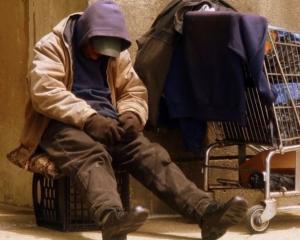
Five demographic factors stand out
If we consider any New Zealand death that's been linked to a Covid-19 infection, our pandemic toll today stands at 516.
The bulk of these have been recorded in just the last three months, amid an Omicron wave that's infected hundreds of thousands of us.
Before the variant arrived here, officials had reported just 26 virus deaths in the first national wave, and another 29 during the Delta outbreak.
Many of our deaths have been centred in our largest city, with Auckland, Counties-Manukau and Waitematā accounting for 49, 89 and 65 deaths respectively.
Outside the region, 68 have been reported in Waikato, along with 32 in Canterbury, 25 in Bay of Plenty, 24 in Wellington's Capital and Coast DHB area, and 21 in the Hutt Valley.
Ministry of Health data also showed a slightly uneven split in death rates by sex – 57 percent male, versus 42 percent female – and a heavy skew toward older age groups.
For instance, of 483 listed deaths that have been logged in age bands, nearly 90 percent involved patients older than 60: including 104 people in their 70s, 144 people in their 80s and 115 people aged over 90.
On Sunday, The New Zealand Herald reported how nearly 170 aged-care residents have died after catching Covid-19 – with hundreds of active cases in facilities across the country.
Modellers have repeatedly singled out age as a major Covid-19 danger factor: UK data shows the risk of death roughly doubled with an extra five to eight years of age.
A disproportionate number of virus-linked deaths to date have involved Māori (17 percent of 483 cases) and Pacific people (15 percent) - a trend that's been put partly down to systemic factors like healthcare inequity.
Research has already indicated how, even after controlling for age and pre-existing conditions, Māori were two and a-half times more likely to need hospital care than non-Māori - while the risk for Pacific people was even greater, at three times higher.
The ministry data also highlighted another obvious factor: vaccination status.
Of the 483 deaths, 138 occurred among people not fully vaccinated, compared with 146 people who'd received two doses, and 199 who were boosted.
Given more than 95 percent of eligible Kiwis aged over 12 have received at least two doses, the unvaccinated remained greatly over-represented in the data.
Most of our virus deaths are still unclassified
How many of these people really died of Covid-19?
We don't know, as just a small proportion of those 516 deaths – 51 in total - have been officially coded with coronavirus as the underlying cause.
But we do know that, of those 51 deaths, those same demographic trends have held up, with Māori accounting for 12 deaths, Pacific people for eight, and two-thirds involving people aged over 70.
With officials yet to classify nearly 430 deaths, experts have repeatedly called for caution when attempting to interpret the data.
The ministry points out that all of those un-coded mortalities merely involved someone dying within 28 days of registering a positive test result.
That meant an earlier-infected person could be killed in a car crash but still be logged as a Covid-19 death, or die from an existing health condition that happened to be combined with the virus.
"It might be people with severe respiratory illnesses, or even terminally ill with cancer, and a Covid-19 infection is what proves to be what precipitates their death – these are the complex ones to consider," Otago University epidemiologist Professor Michael Baker said.
"And then, there's possibly the minority who are otherwise well, but get a very distinct Covid infection and die from that."
Correctly coding these deaths took time, he said, which explained why just a small number had been properly pinned to Covid-19.
Our death rate is still remarkably low
When the ministry reported New Zealand's 500th death on Monday, it marked a milestone that pushed the country to a figure of 100 deaths per million.
"That's notable because deaths per million is a metric that many countries and websites such as Our World In Data use to draw comparisons," Baker said.
However, he preferred to use another measure that wasn't so hampered by coding issues, and one in which New Zealand actually had a negative value: excess mortality.
"This pandemic has now caused 20.6 million deaths globally up to 11 March 2022, according to Economist magazine's excess death calculator – but New Zealand has still got the lowest excess mortality rate of any country in the world at the moment, which is pretty remarkable."
While life expectancy for the average Kiwi dropped slightly between 2020 and 2021, New Zealand was one of only three countries to have seen an increase since 2019.
The average New Zealander was expected to live to be 81.99 in 2021, a drop of 0.37 years from 82.36 in 2020 – but still higher than the 2019 life expectancy of 81.65.
Along with an elimination strategy that kept New Zealand virtually Covid-free for most of the pandemic, Baker said vaccination had made an enormous difference at keeping death rates low.
"If we consider that 750,000 people have been infected since the start of the year – or about 15 percent of the population – and roughly 450 people have died in that time, that makes for a case fatality rate of around 0.06 percent," he said.
"That's roughly in the same range as seasonal flu."
Assuming our true infection rate was much higher – which it undoubtedly was – and the actual number of deaths caused by virus was much lower, he said Covid-19's death rate would be yet smaller.
"Although," he added, "Covid deaths will continue increasing as they lag after cases by about four weeks, this effect might be balanced by some over-counting of deaths caused by Covid-19."
At the same time, he said mass tragedies experienced by other countries illustrated just how deadly Covid-19 could be without the protection of high vaccination coverage in older and more vulnerable groups.
"Hong Kong, with a population just slightly bigger than New Zealand, has lost 8560 people since the start of February compared with 450 here," he said.
"That's the kind of scenario New Zealand easily could have seen: but our high vaccination rate and other factors pushed our infection fatality risk down to the level of seasonal flu."













